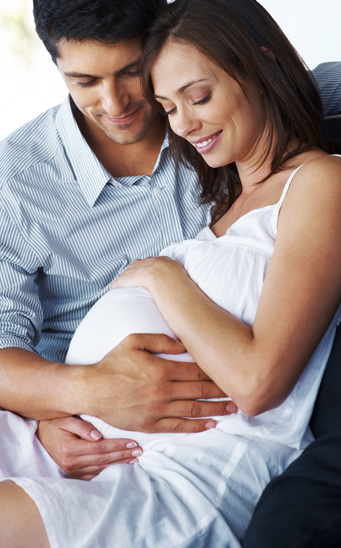
Twin or multiple pregnancy
Multiple pregnancy is becoming more common due to assisted reproductive methods. It is important to diagnose it from the beginning for proper monitoring and control, thus minimizing the risks for the mother and future babies.
Multiple pregnancies have increased in recent years due to the use of Assisted Reproduction techniques
Multiple pregnancy is understood to be one in which more than one fetus develops . The most frequent are twins , whose frequency has increased in recent years due to the use of Assisted Reproduction techniques.
Given the clinical repercussions of twin pregnancy, especially fetal pregnancy, it is essential to assess whether they are mono or dizygotic, that is, whether one or two eggs have been fertilized. In the first case they will give rise to identical twins, and in the second to different twins (twins) , which can even be of different sex. When the twins are identical, it will also be interesting to differentiate whether or not they share the placenta (monochorionic or bichorionic) and whether or not they share the amniotic sac (monoamniotic or bi-amniotic).
How is twin pregnancy diagnosed?
There is a clinical or suspected diagnosis when:
– The uterine size is greater than that corresponding to gestational age.
– More than one fetal heart tone is heard.
– More than one fetus is palpable.
The diagnostic method of certainty is carried out by means of ultrasound, which confirms the existence of more than one fetus and also allows the number of bags and the number of placentas to be counted.
Complications of a twin pregnancy
Multiple gestations in general lead to an exacerbation of the signs and symptoms of pregnancy and pose a risk situation for both the mother and the fetuses.
– Maternal complications : increased nausea and vomiting, anemia, aorto-caval compression, increased edema, varicose syndrome, back pain, movement difficulties, hypertensive disorders pregnancy, carbohydrate tolerance alteration, premature placental detachment, polyhydramnios, premature delivery, dystocic deliveries and postpartum hemorrhage.
– Fetal complications : early and late abortions, congenital malformations, conjoined fetuses (Siamese), prematurity, premature rupture of membranes, hydramnios, cord prolapse, delayed intrauterine growth, low birth weight, fetal-fetal transfusion syndrome, increased neurological injuries, intertwining of cords, collision of twins in childbirth, increased perinatal mortality.
What are the goals in managing a twin pregnancy?
1. Make an early diagnosis.
2. Manage it as a high-risk pregnancy.
3. Early detection of complications.
4. Prevent premature labor.
5. Be able to perform an adequate immediate neonatal checkup.
What specific recommendations will the gynecologist apply?
In addition to the usual recommendations for normal pregnancy, the gynecologist will make the following recommendations to the woman:
– Inform the pregnant woman of the signs and symptoms of suspected complications, especially those of premature delivery.
– Administer a daily supplement of 300 calories in the diet.
– Because fetal requirements are usually increased, it is advisable to also administer iron and folic acid supplements.
– Rest from the 2nd half of pregnancy: avoid work activity and sexual relations.
– There will be more revisions than those stipulated for simple pregnancy. In each of them the analyzes and ultrasounds will be repeated.
Performance during childbirth
Several studies have observed that the minimum mortality and morbidity in twin pregnancy is recorded at 37-38 weeks . Therefore, the pregnancy must be terminated before the date indicated at term for a simple pregnancy. These data are related to the greater lung maturity of twin fetuses compared to single fetuses for the same gestational age.
The incidence of caesarean sections in twin pregnancy is higher than in pregnancy with a single fetus and, as in it, only when both twins are in cephalic presentation, do not share the same amniotic sac and there are no other contraindications, can vaginal delivery be attempted .
There is an increased risk of postpartum bleeding , mainly due to uterine atony (lack of contraction of the uterus), which means that prophylactically more drugs are used that favor the contractility of the uterus or that blood transfusions are needed.
Know more
This type of delivery can have a significant maternal psychological impact that can increase the risk of postpartum depressive symptoms. Therefore, adequate psychological and social support is required to help the mother avoid these problems.




















+ There are no comments
Add yours